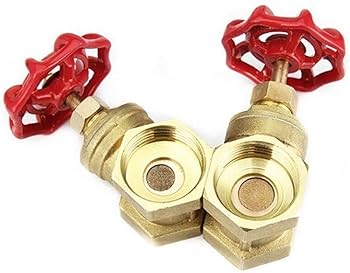No More Drips – Solving the Gate Valve Conundrum
In the realm of fluid control and pipeline systems, gate valves serve as vital components, allowing for the regulation and isolation of fluid flow. However, gate valves have long been plagued by a persistent issue. The conundrum of gate valve has been a longstanding challenge for industries and infrastructure systems, resulting in operational inefficiencies, increased maintenance costs, and potential environmental hazards. But there is good news on the horizon – innovative solutions are emerging to address this issue, promising a future with no more drips. One of the primary reasons behind gate valve lies in the traditional design and materials used in their construction. Conventional gate valves often feature a solid wedge that, over time, can become prone to wear, corrosion, and damage. This leads to a poor seal and unwanted. To overcome this challenge, modern gate valve designs are incorporating resilient materials like rubber seals and advanced coatings to ensure a more secure and durable seal. These materials enhance the valve’s ability to withstand the harsh operating conditions that often lead to leaks.

Furthermore, gate valve manufacturers are investing in advanced machining and precision engineering. The development of tighter tolerances and smoother surfaces in valve components not only helps in reducing but also extends the service life of the valve. This approach, combined with the use of corrosion-resistant materials, minimizes the potential for gate valve, thus solving the conundrum that has plagued industries for decades. Another contributing factor to gate valve is improper installation and maintenance practices. These valves require precise alignment during installation, as even a slight misalignment can result in. Routine maintenance is also crucial to ensuring that gate valves continue to operate effectively. Implementing maintenance schedules, which include inspections and any necessary adjustments, can significantly reduce gate valve leaking at stem. In recent years, the adoption of smart valve technology has added a new dimension to the quest for leak-free gate valves. Advanced sensors and control systems can monitor the performance of gate valves in real-time.
Additionally, remote monitoring and predictive maintenance algorithms can predict the optimal time for maintenance, ensuring that gate valves are always in peak condition. The era of gate valve conundrum may also see its end with the integration of automation and control systems into valve operations. Automation can allow for precise control over valve opening and closing, reducing the likelihood of damaging surges or excessive pressure that might lead to. Advanced control systems can respond rapidly to changing conditions, offering a level of precision that is difficult to achieve manually. In conclusion, the persistent issue of gate valve, which has long posed challenges for industries and infrastructure systems, is on the path to resolution what is a gate valve? Through the use of innovative materials, precision engineering, smart technology, and advanced control systems, gate valve manufacturers are working diligently to minimize and improve the performance of these critical components.